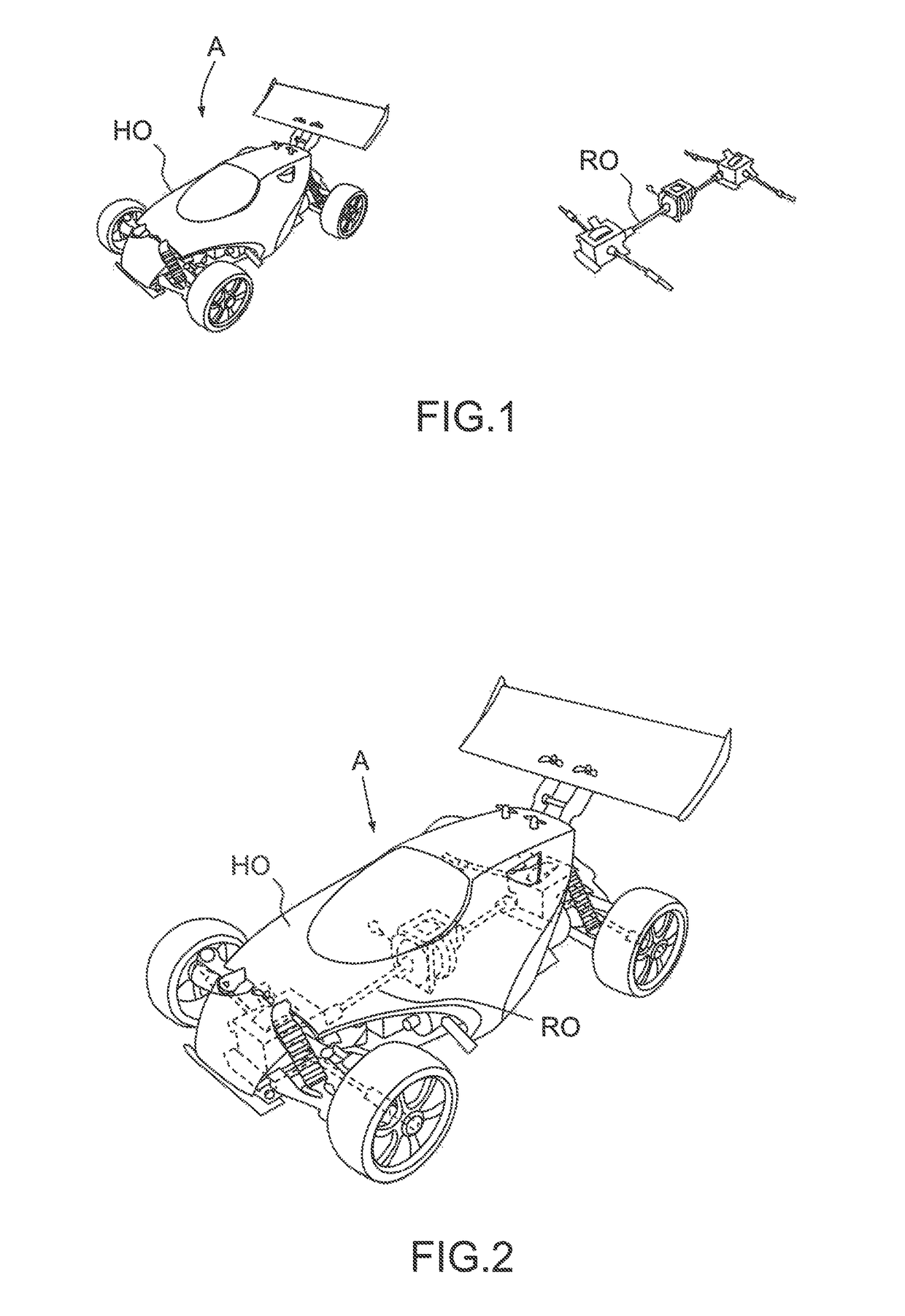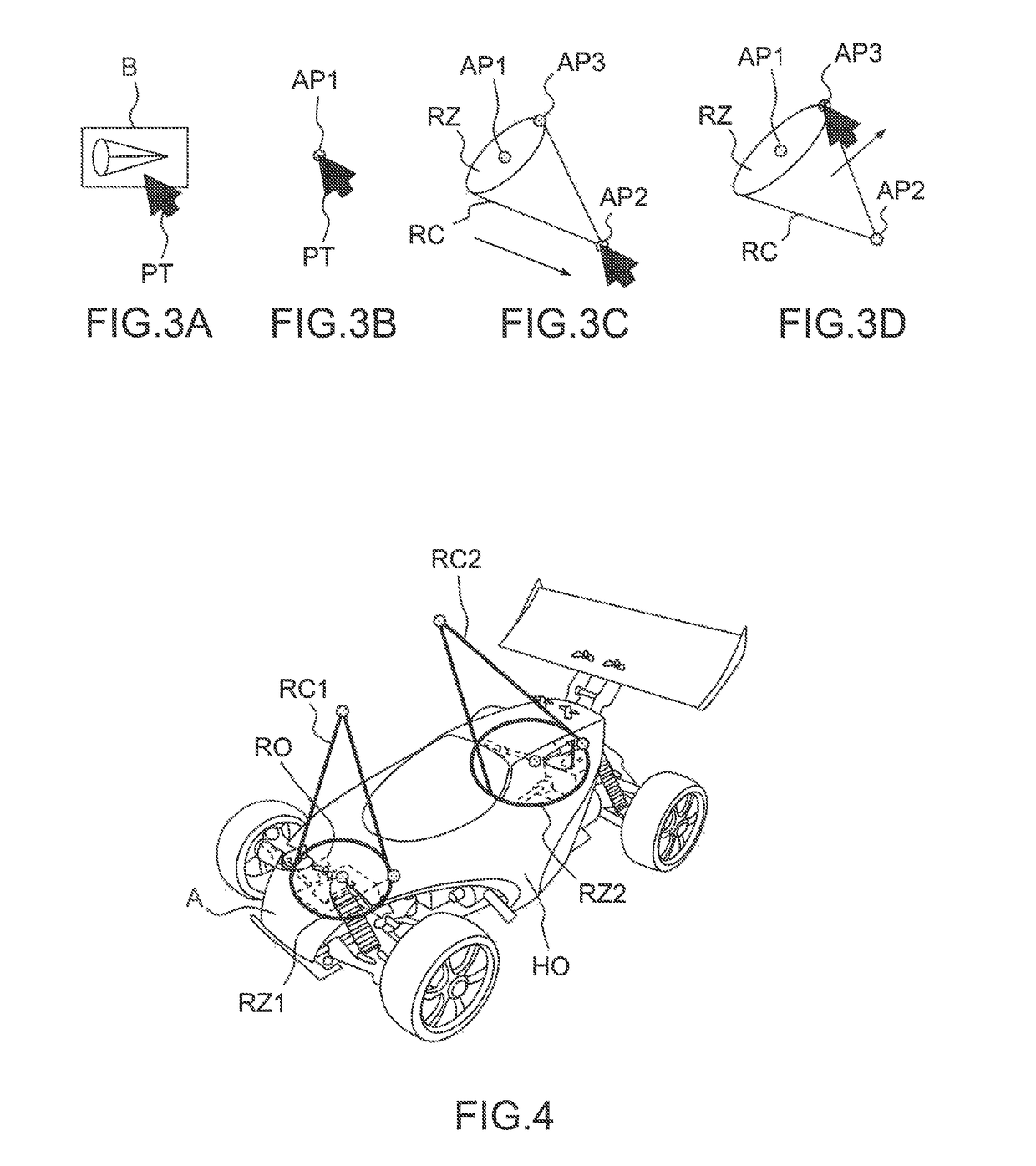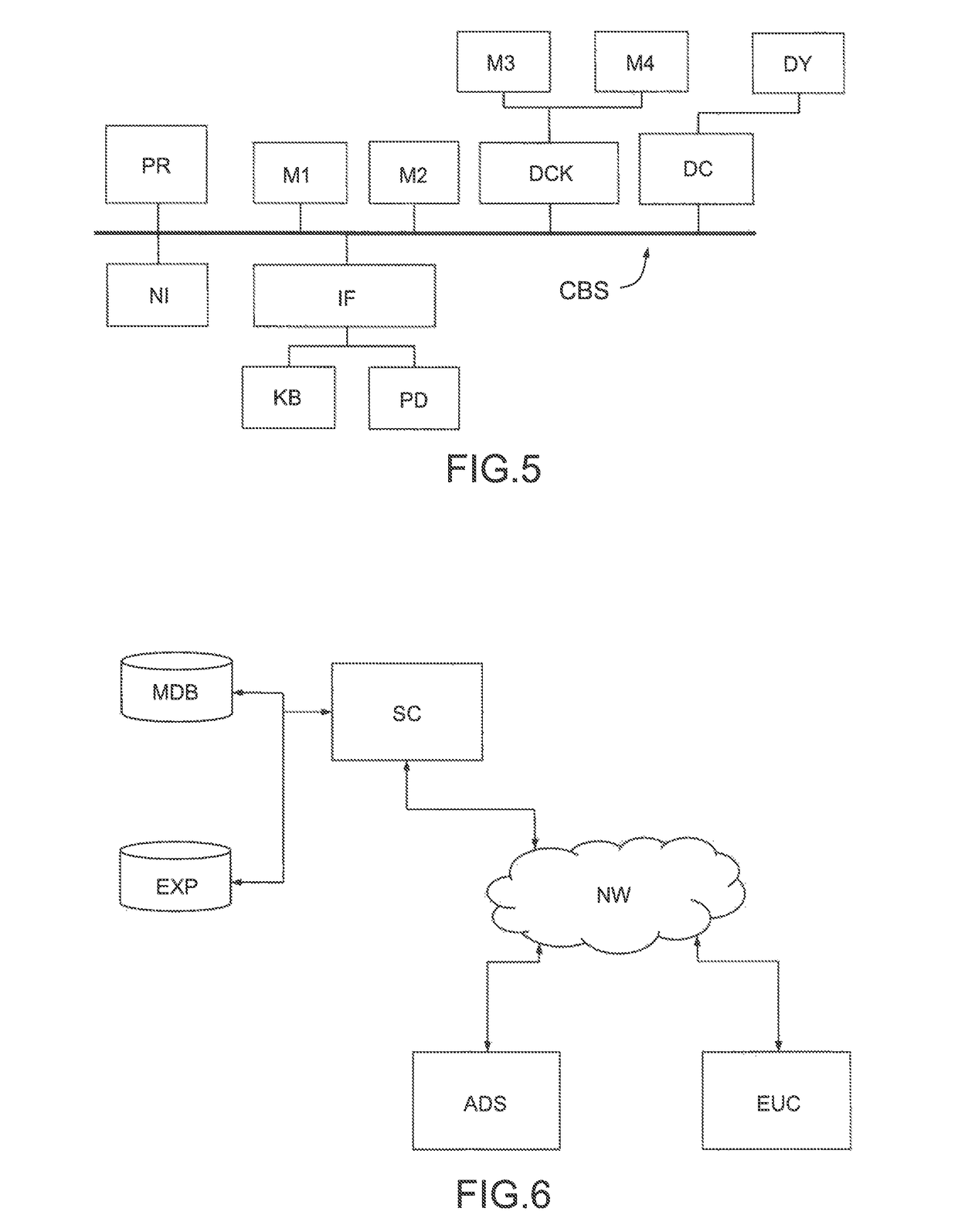Computer-implemented method of displaying an assembly of digitally modeled objects revealing hidden objects
a technology of digital modeling and hidden objects, applied in the field of computer-implemented methods of displaying an assembly of digitally modeled objects, can solve the problems of cumbersome methods, significant manual intervention of users, and inability to make the transmission visible, and achieves the effect of simple and effective changes, and easy change of point of view
- Summary
- Abstract
- Description
- Claims
- Application Information
AI Technical Summary
Benefits of technology
Problems solved by technology
Method used
Image
Examples
Embodiment Construction
[0030]A description of example embodiments of the invention follows.
[0031]Hereafter, a “three-dimensional” (or “3D”) object will be an object—or a digital model thereof—allowing a three-dimensional (3D) representation. A 3D representation allows the viewing of the part from all angles. For example, a 3D object, when 3D represented, may be handled and turned around any of its axes, or around any axis in the screen on which the representation is displayed.
[0032]Conversely, a “two-dimensional” (or “2D”) object will be an object—or a digital model thereof—only allowing a two-dimensional (2D) representation e.g. on a plane. For example, a 2D object may only be translated in the plane of the screen on which the representation is displayed, or rotated around an axis perpendicular to said screen.
[0033]A “digital model” of an object is a data structure, or a set of data structures, which can be handled by a computer and contains all the information required by the computer to generate a 2D o...
PUM
 Login to View More
Login to View More Abstract
Description
Claims
Application Information
 Login to View More
Login to View More - R&D
- Intellectual Property
- Life Sciences
- Materials
- Tech Scout
- Unparalleled Data Quality
- Higher Quality Content
- 60% Fewer Hallucinations
Browse by: Latest US Patents, China's latest patents, Technical Efficacy Thesaurus, Application Domain, Technology Topic, Popular Technical Reports.
© 2025 PatSnap. All rights reserved.Legal|Privacy policy|Modern Slavery Act Transparency Statement|Sitemap|About US| Contact US: help@patsnap.com



